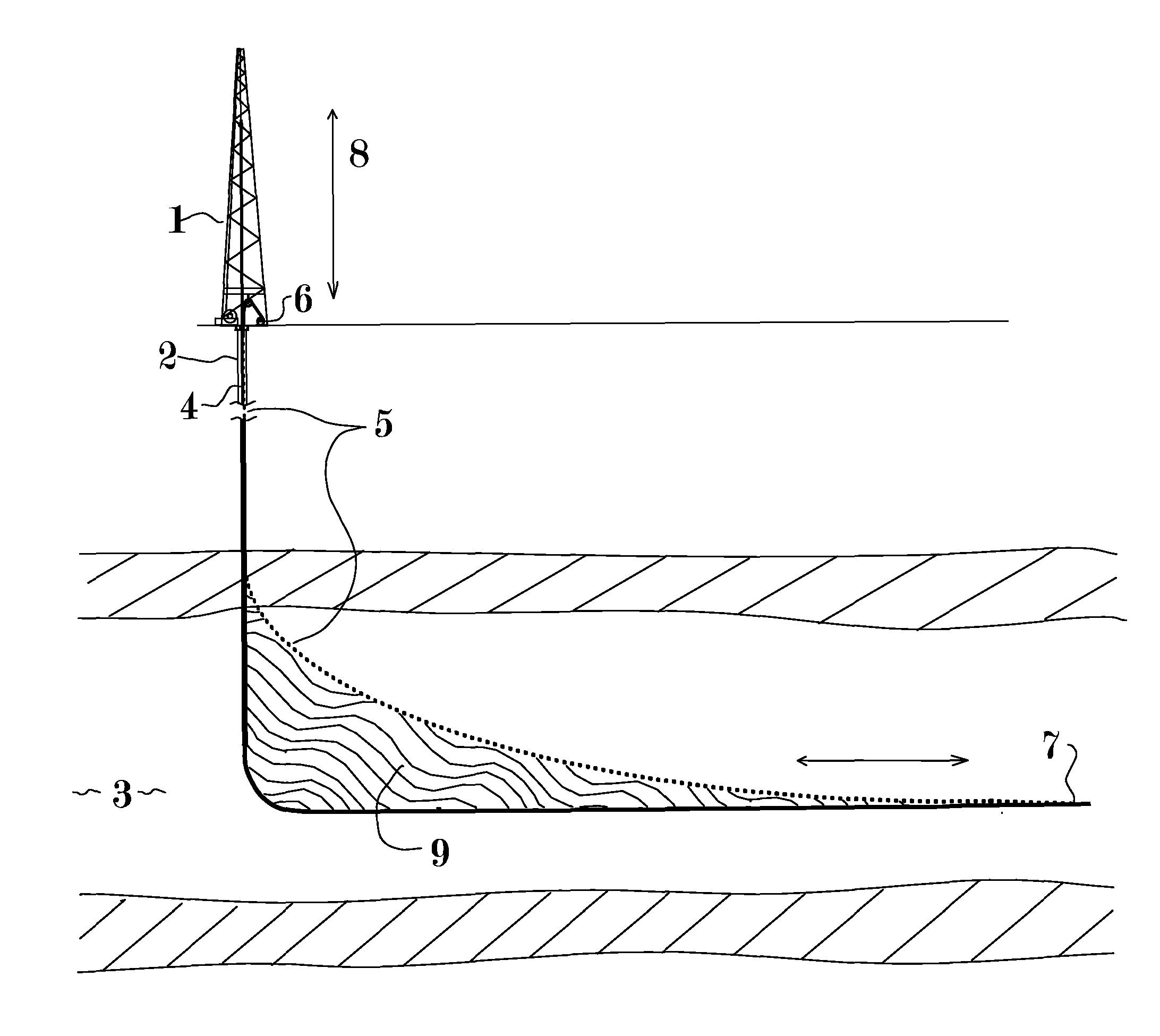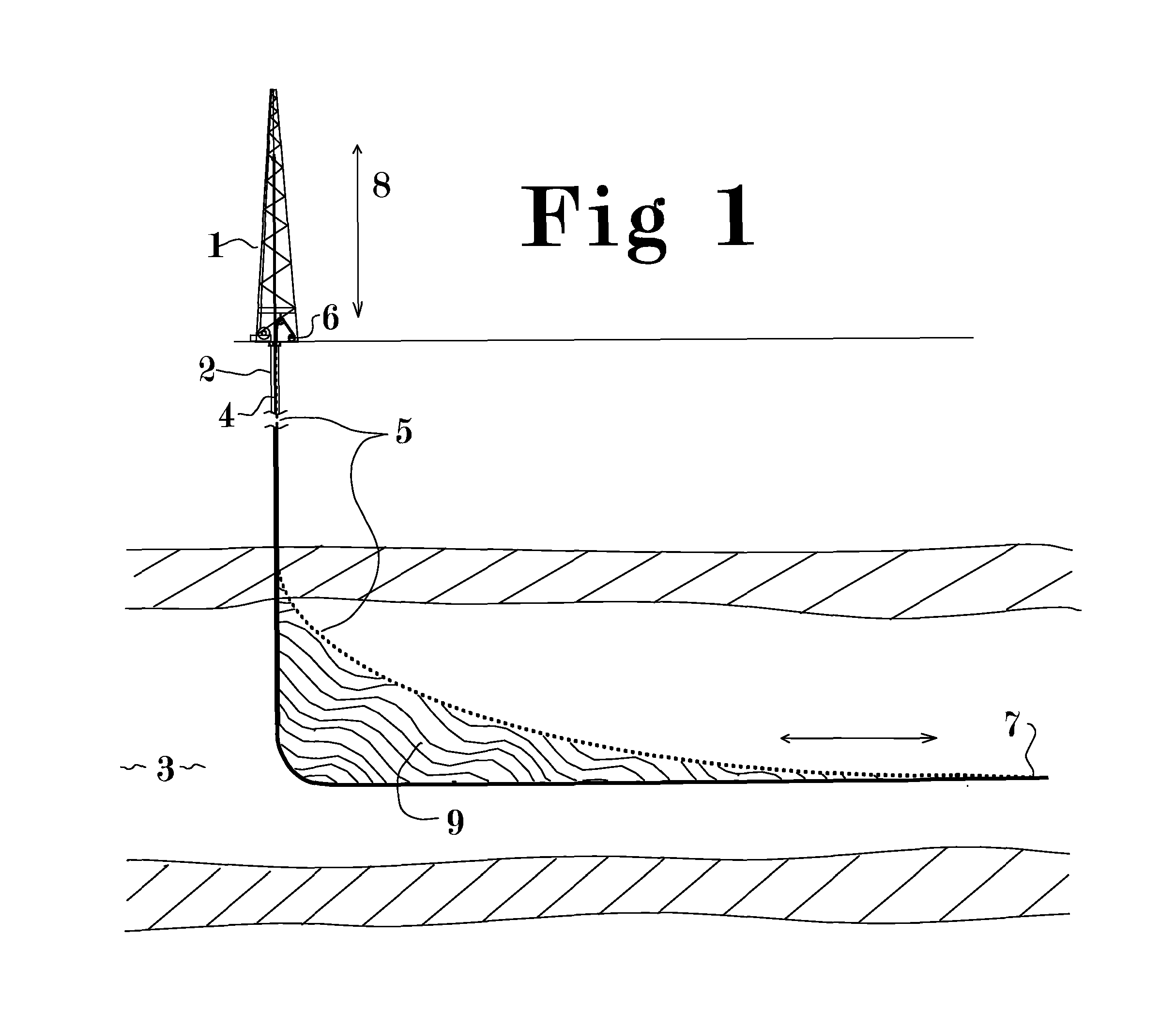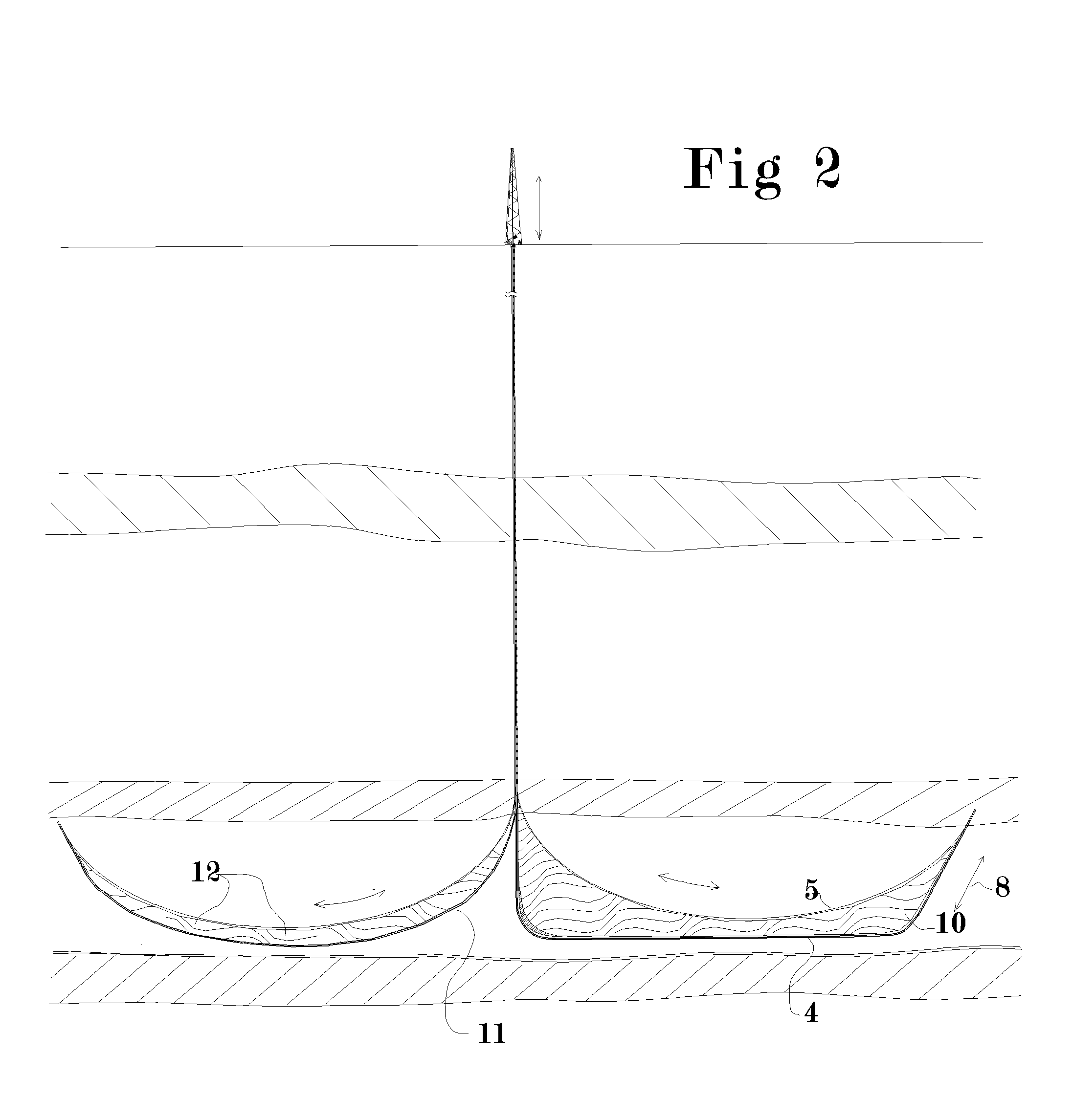Method and Apparatus for Increasing Well Productivity
a well productivity and well technology, applied in the direction of earthwork drilling tools, directional drilling, borehole/well accessories, etc., can solve the problems of reducing the jet energy of ambient hydrostatic pressure, reducing the depth of the slot to less than a meter, and reducing the depth of the slot quickly,
- Summary
- Abstract
- Description
- Claims
- Application Information
AI Technical Summary
Benefits of technology
Problems solved by technology
Method used
Image
Examples
application embodiment
DETAILED DESCRIPTION OF GEOTHERMAL APPLICATION EMBODIMENT
[0095]Natural geothermal reservoirs where heat is very near the earth's surface produce hot water that can be used as an energy source for electrical generation. Suitable geologic conditions for natural shallow geothermal reservoirs are rare but at greater depths heat is available over most of the planet. However daunting technical problems have limited the utilization of this heat resource.
[0096]Artificial fracture systems tend to allow for a preferential flow that mines heat from a much smaller area than intended so they tend to cool after a few years. Waters present in the geothermal formation are often corrosive and tend to deposit mineral scale on equipment they come in contact with. High temperatures of up to 300 Celsius greatly limit the types of equipment that can survive in a geothermal well. Rock in geothermal areas is often very hard and has many dry fissures that can interfere with conventional drilling and complet...
PUM
 Login to View More
Login to View More Abstract
Description
Claims
Application Information
 Login to View More
Login to View More - R&D
- Intellectual Property
- Life Sciences
- Materials
- Tech Scout
- Unparalleled Data Quality
- Higher Quality Content
- 60% Fewer Hallucinations
Browse by: Latest US Patents, China's latest patents, Technical Efficacy Thesaurus, Application Domain, Technology Topic, Popular Technical Reports.
© 2025 PatSnap. All rights reserved.Legal|Privacy policy|Modern Slavery Act Transparency Statement|Sitemap|About US| Contact US: help@patsnap.com



